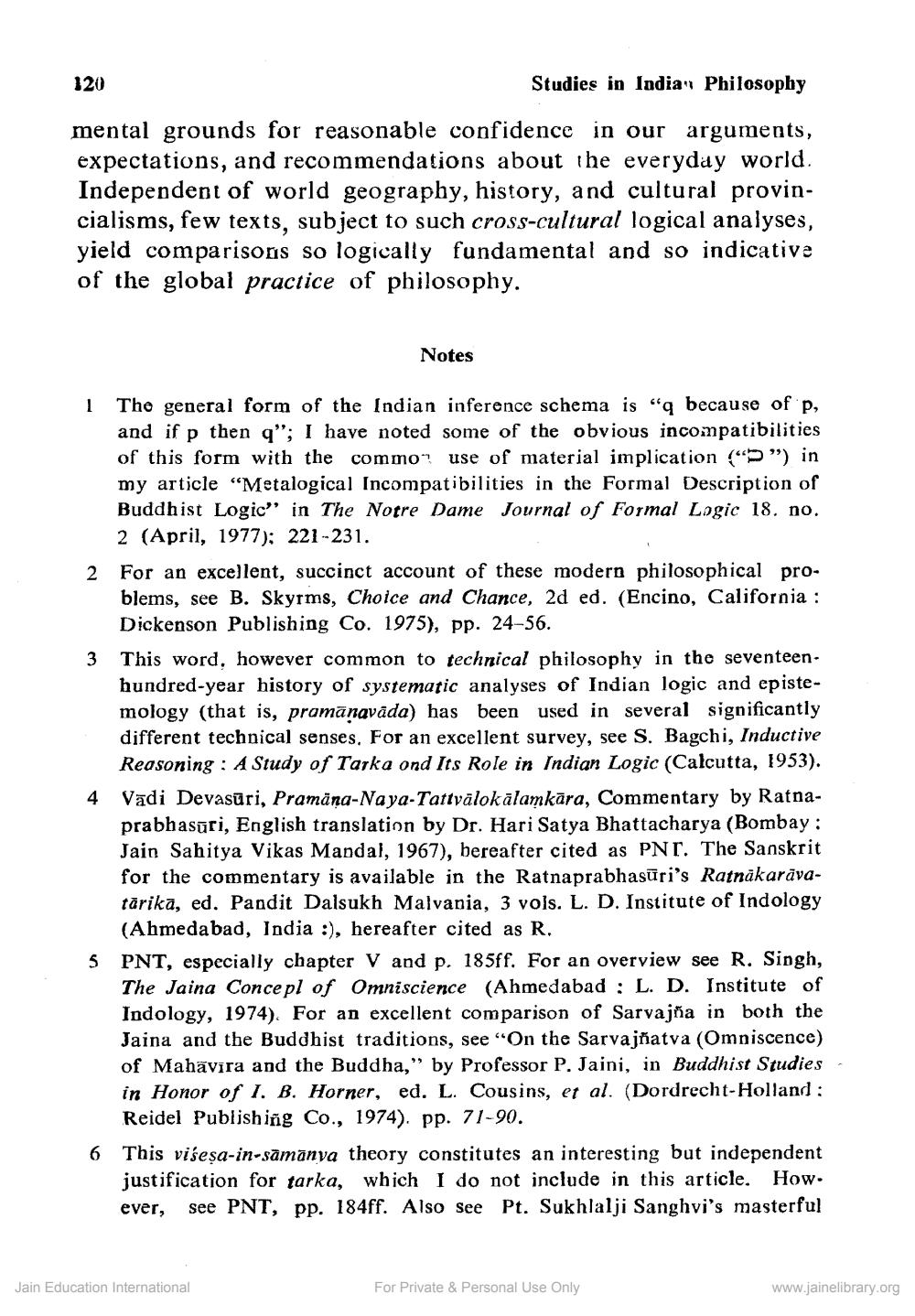________________
120
Studies in India" Philosophy
mental grounds for reasonable confidence in our arguments, expectations, and recommendations about the everyday world. Independent of world geography, history, and cultural provincialisms, few texts, subject to such cross-cultural logical analyses, yield comparisons so logically fundamental and so indicative of the global practice of philosophy.
Notes
1 The general form of the Indian inference schema is " because of p,
and if p then q"; I have noted some of the obvious incompatibilities of this form with the commo? use of material implication ( ") in my article "Metalogical Incompatibilities in the Formal Description of Buddhist Logic" in The Notre Dame Journal of Formal Logic 18. no.
2 (April, 1977); 221-231. 2 For an excellent, succinct account of these modern philosophical pro
blems, see B. Skyrms, Choice and Chance, 2d ed. (Encino, California :
Dickenson Publishing Co. 1975), pp. 24-56. 3 This word, however common to technical philosophy in the seventeen
hundred-year history of systematic analyses of Indian logic and epistemology (that is, pramānavāda) has been used in several significantly different technical senses. For an excellent survey, see S. Bagchi, Inductive
Reasoning : A Study of Tarka ond Its Role in Indian Logic (Calcutta, 1953). 4 Vadi Devasūri, Pramana-Naya-Tattvālokālamkāra, Commentary by Ratna
prabhasūri, English translation by Dr. Hari Satya Bhattacharya (Bombay: Jain Sahitya Vikas Mandal, 1967), hereafter cited as PNr. The Sanskrit for the commentary is available in the Ratnaprabhasūri's Ratnakarāvatärika, ed. Pandit Dalsukh Malvania, 3 vols. L. D. Institute of Indology
(Ahmedabad, India :), hereafter cited as R. 5 PNT, especially chapter V and p. 185ff. For an overview see R. Singh,
The Jaina Concepl of Omniscience (Ahmedabad : L. D. Institute of Indology, 1974). For an excellent comparison of Sarvajña in both the Jaina and the Buddhist traditions, see “On the Sarvajñatva (Omniscence) of Mahavira and the Buddha," by Professor P. Jaini, in Buddhist Studiesin Honor of 1. B. Horner, ed. L. Cousins, et al. (Dordrecht-Holland:
Reidel Publishing Co., 1974), pp. 71-90. 6 This visesa-in-sāmānva theory constitutes an interesting but independent
justification for tarka, which I do not include in this article. How. ever, see PNT, pp. 184ff. Also see Pt. Sukhlalji Sanghvi's masterful
Jain Education International
For Private & Personal Use Only
www.jainelibrary.org




